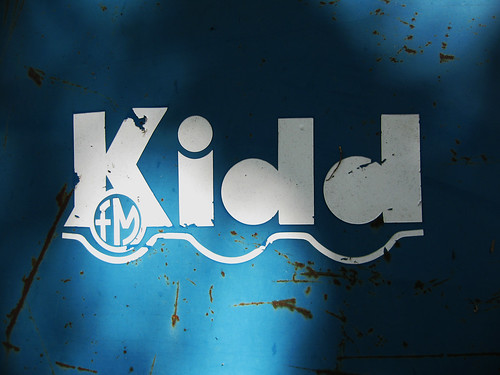Denver Now, Denver Then: Katy Kidd’s Art Is Gen X Through and Through
Kidd #Kidd

Artist Katy Kidd could not wait to move from Denver when she graduated from East High School in 1989. This was her hometown, born and raised, and “I was so ready to get out,” Kidd recalls. “But that was more about me than Denver. I was just so done with where I was, and that didn’t have all that much to do with the city itself, looking back. I just had to leave the nest.”
It’s true that a lot of kids want to fly the coop, but it’s also true that many of those who get out only do so for a while. Such is the case with Kidd, who’s now back in Denver, living and working and making art, mostly paintings, though she’s also done some work with street art and photography. Kidd’s work has been compared to Andy Warhol’s in its pop-culture saturation, and described as “both tongue-in-cheek and deadly serious.” Her latest installation is at Alto Gallery, 1900 35th Street in RiNo, and is on view through August 26.
For Kidd, leaving the nest meant joining up with the Rainbow Family, a loosely affiliated counterculture group founded in the 1970s that is still around today and had its annual gathering in Colorado last year. Kidd’s role in the group was working with a kitchen that would feed the hungry around the country — from the coasts to the mountain west and into the Midwest. “We did it all out of an RV,” Kidd says. “If we weren’t at a gathering or following a Dead show, we’d just set up in a park and feed homeless people.”
Four years later, Kidd ended up in Florida, where she had her son — purposefully so, because Florida was one of the two states in the U.S. where Medicaid would pay for a midwife. “I was more or less living on the streets myself by then,” Kidd says. “Food stamps, Medicaid, eating in soup kitchens. After I had my son, I changed all of that. I had to get my life together, and I had the privilege of being able to do that. I wasn’t stuck in that lifestyle, like some people are.”
That privilege — and the awareness of it — is very Gen X. It’s what allowed Kidd to enroll in and eventually graduate from Evergreen State College, eventually moving to Santa Fe, where she worked with local artists while being one herself, all the while raising a family. “That wandering, looking for something else — some didn’t do it. My brother, who’s two years older than me, didn’t. Neither did his friends. But some of us were drawn to that life, either working on a farm or as part of an intentional community,” she says. “We were definitely like, ‘Fuck the system.’ We didn’t want to do what our parents did. So materialistic.”
click to enlarge 
Kidd’s work has been called “both tongue-in-cheek and deadly serious.”
Katy Kidd
Kidd says she understands how the generations drifted, to some degree. Like most Gen X-ers, she saw it happening firsthand. “We were raised by a generation that was itself raised by a generation that lived through the Depression,” she says. “My parents weren’t hippies — my dad was more a beatnik. But they definitely became upwardly mobile. White men back then? Guaranteed success. Guaranteed.”
Like a lot of ’80s teens, Kidd wouldn’t do the usual stuff her parents wanted her to do, whether it be debutante balls or even just normal high school stuff. “I was one of the art kids,” she says. “I loved creative writing and my art classes. We had this phenomenal art teacher — he was very stoic, a man of few words, but the things he did say still stick with me today. But, yeah, I was that kid missing as many days as possible without getting kicked out of school. We’d run around 13th Street. RiNo was just a bunch of old warehouses at that point. I hung out at Muddy’s all the time. Another coffee shop a couple doors down from Wax Trax called Pegasus. I remember going to Jazz Night at the Denver Art Museum a lot. And I was at the Art Students League all the time. That was my second home.”
Kidd currently lives in Five Points, a part of town that’s seen its share of poverty and is now experiencing a huge influx of homeless population. What Kidd witnesses every day, she says, takes her right back to her days working to feed the homeless population across America, an issue that very much informs her work today.
“There’s also this idea of coming home again at 52, after two failed marriages,” she adds. “Prodigal daughter stuff. Visiting this life, the full-circle thing of what I could have done, what choices I could have made. There’s a debutante in one of my paintings, right next to Nancy Reagan and the whole just-say-no campaign. I’m poking fun at it all, but I’m also asking the questions I think we all ask: What does it all mean? Did it mean anything? Does anything matter?”
Pure Gen X, those questions. And maybe — just maybe — art can lead us to the answers.
Katy Kidd’s work can be seen at her website, and at Alto Gallery, 1900 35th Street, through August 26.